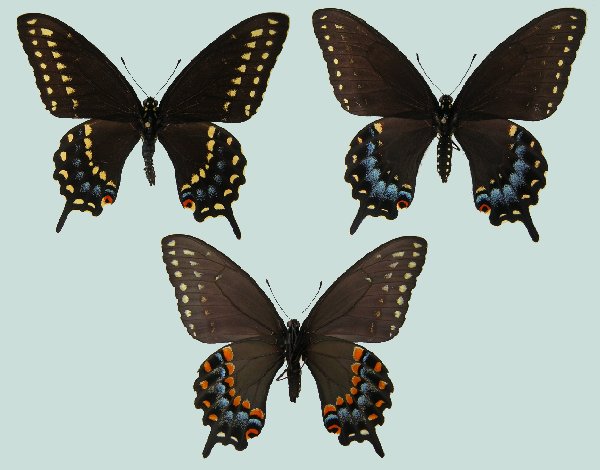Papilio polyxenes asterius

Beginner Rearing Instructions: Eastern Black Swallowtail
Photo Life History: Papilio polyxenes asterius
Habitat: Mountain Canyons; Mountain Hilltops; Forest (edges); Agricultural Areas; Urban-Suburban
Host Plants: Daucus carota, Ruta graveolens, Anethum graveolens, Cychlospermum leptophyllum, Thamnosma texana
Suitable Lab Host Plants: Foeniculum vulgare. Lomatium dissectum. Almost any potted fennel, dill, and/or parsley purchased from a nursery. (Make sure that potted parsleys have not been sprayed with insecticides.)
Caring for Live Female Butterflies: Feed females regularly.
Methods of Female Oviposition: Open Screen Cages
How to Find Eggs: Isolated Host Plants. Also, one can gather eggs by following a female as she examines plants and oviposits on host plants.
How to Hatch Eggs: Consolidate eggs into one container
How to Find Caterpillars in the Field: Isolated Host Plants. Young instars are black with a white saddle and contrast somewhat easily against the greenish background of the host plant. Late instar larvae create unique strip patterns on the host plant.
Caterpillar setups: Open terrariums; Open Bucket
Larva to Pupa: Larva purges and wanders
How to Find Pupae in the Field:
Number of Broods per Year: 1-3; depending upon location.
Overwintering Stage: Pupa.
Overwintering Strategies: Your Own Backyard; Refrigerator
Post-Hibernation Strategies: Expose post-diapause pupae to warmer temperatures (room temperature) Long-Day Photoperiod; High Humidity. (Mist spray pupae daily once your bring them out of the cold or refrigerator.)
Avoiding Diapause Techniques: Provide larvae with healthy host plant in combination with long-day photoperiod.
Disease Prevention: Change out host plant and remove frass every three to six days.
Emergence: Emergence Container
Field Notes:

